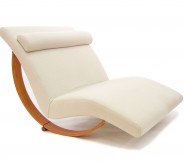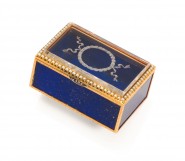Lot #74 - Robert Bridgewater
-
Auction House:Mossgreen
-
Sale Name:The John Buckley Collection of Modern & Contemporary Australian Art
-
Sale Date:13 May 2014 ~ 6.30pm
-
Lot #:74
-
Lot Description:Robert Bridgewater
(born 1971)
Black Tongue
blackwood sculpture
152 x 54.5 x 14 cm -
Provenance:Smyrnios Gallery 1997
-
Exhibited:Something Old, Something New: The Sculpture Show, John Buckley Gallery, Melbourne, 18 July - 4 August 2007
-
Notes:Born and raised on a farm near Nhill in Victoria's Western District, Robert Bridgewater grew up surrounded by the beautiful natural landscape that has inspired many memorable works by some of Australia's greatest artists' including Nicholas Chevalier, Arthur Boyd, Sydney Nolan and more recently, Jill Orr. While these artists in their paintings (or in Jill Orr's case, performances) aimed to capture the general overwhelmingly harsh yet fascinating landscape, Bridgewater's works draw on the minute natural skin found on the flora and fauna. Bridgewater selects his materials after careful deliberation and research. When commissioned to create site specific installations, he often meets with local wood suppliers and spends time with the neighbouring communities. The artist researches various traditions of carving and employs techniques and stylistic formulas that date back to antiquity, as well as employing modern tools. Martina Copley has identified Arte Povera and the 'ready-made' as the origins of Bridgewater's early installations where planks of wood are bound together to create primitive shelters1. However, it can be argued that a continued interest in the Italian art movement has persisted quietly in the background of Bridgewater's sculptures. If direct formal links can be discerned between Bridgewater's refuge-like constructions and Mario Mertz's 'igloo's', there is also something of Giuseppe Penone in the fine detailing and return to natural forms in Bridgewater's later works. Where Penone reversed the manufacturing process of the object, such as in Tree of 12 Meters 1980-2 (Tate, London), Bridgewater's sculptures go through a similar process of industrialization before a return to natural formations. In Black Tongue, the artist emphasises the natural curvature of the wood with deep parallel and linear grooves that begin at the pointed base of the central stem and proceed to the extremities of the two branches. Thus, Black Tongue is a hybrid of the natural form of the primary source (the tree) and the decorative aspects found in man-made objects, particularly those originating in indigenous cultures, such as clubs, woomeras, spears and boomerangs. This utilitarian aspect of the piece is enhanced by the irregular stain covering Black Tongue which gives the object a worn and lived patina. In this, Bridgewater has the fine sensibility to create an intimate and personal feel to what could have become in the hands of another sculptor a sterile and imposing carving. 1 Martina Copley, 'An architecture of skin', Robert Bridgewater, Niagara Galleries, Melbourne, 2002, (unpaged)
-
Estimate:A$5,000 - 7,000
-
Realised Price:
-
Category:Art
This Sale has been held and this item is no longer available. Details are provided for information purposes only.










